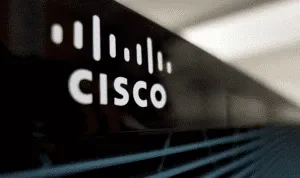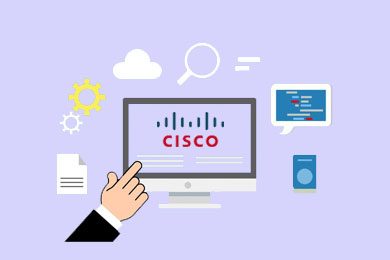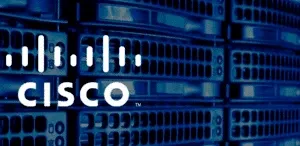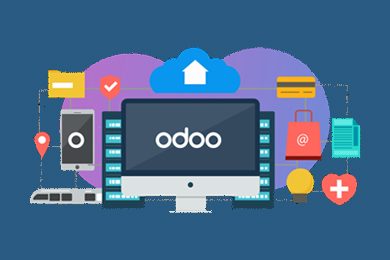This plan includes
- Limited free courses access
- Play & Pause Course Videos
- Video Recorded Lectures
- Learn on Mobile/PC/Tablet
- Quizzes and Real Projects
- Lifetime Course Certificate
- Email & Chat Support
What you'll learn?
- Students will learn what is required to pass the CCNP Route certification exam.
- At the end of this course, students should be knowledgeable in topics of the CCNP Route certification.
- Students will be able to apply the topics in this course in real world scenarios.
Course Overview
The CCNP Route 300-101 certification is your next step in your professional Cisco Career. When you complete this course you should be well prepared to take your certification exam and begin to join the professional world of Cisco.
DISCLAIMER: Please note that the simulators/emulators used in this course are not part of the course. It is the students responsibility to have these to practice with. The Cisco Packet Tracer and/or VIRAL (Virtual Internet Routing Lab) are Cisco proprietary software and can only be obtained through Cisco. It is up to each student to obtain the simulator/emulator of their choice to study along with this course.
This certification not only is a mile stone in your IT career but it is also very sought after by companies around the world that require a higher level of routing.
The CCNP Route is just one of three exams needed to acquire the CCNP R/S.
This course will teach you the advance topics needed for Cisco's CCNP Route exam.
You will learn TCP/IP, Routing Protocols like IGP and EGP (among many others). How to configure Security using Time Based Access-list, Infrastructure Access-lists and IPsec.
You will learn how to filter routes, create prefix lists and so much more.
This course will give the knowledge required, no only to pass the CCNP exam, but it will help you in real world scenarios as well.
The "CCNP Route (300-101): The Complete Course" will be the only course you will
need to prepare and pass your CCNP Route certification exam.
Pre-requisites
- Candidates for this course should know the basics of Routing protocols, subnetting and configuring in the CLI of a the Router.
- Student should have passed the CCNA certification or are in the process of passing the CCNA R/S certification before attempting to take this course.
- Students should have a CCNP Route book to follow along with the course.
- Students should know that this course is one (1) of three (3) needed to pass and attain the CCNP R/S certification.
- Remember that Cisco will not allow anyone to advance to the professional level (CCNP), without first achieving the CCNA!
Target Audience
- Students that have passed or will pass the CCNA certification exam.
- Anyone with a CCNA certification and wants to advance to the professional level which is the CCNP.
- Anyone that wants to advance their Cisco career with a professional certification.
- Anyone that is in the field and needs to understand the higher levels or professional levels, Cisco protocols covered within the CCNP
- Anyone that wants to advance into Networking beyond just the fundamentals.
Curriculum 91 Lectures 08:36:24
Section 1 : CCNP Route 300-101 Course
Section 2 : Routing Protocol Fundamentals
- Lecture 1 :
- Intro to Section
- Lecture 2 :
- What role does routing play in an Enterprise Network?
- Lecture 3 :
- Which Routing Protocol Should I use?
- Lecture 4 :
- Interior or Exterior Routing Protocols
- Lecture 5 :
- Different Categories of Routing Protocols
- Lecture 6 :
- Summary of Section
Section 3 : Fundamentals of Networking Technology
- Lecture 1 :
- Introduction to Section
- Lecture 2 :
- Network Traffic Types
- Lecture 3 :
- Network Architecture Types
- Lecture 4 :
- Summary of Section
Section 4 : TCP/IP Fundamentals
- Lecture 1 :
- Introduction to Section
- Lecture 2 :
- Characterisitics of an IP
- Lecture 3 :
- A Review on Routing
- Lecture 4 :
- Characteristics of TCP
- Lecture 5 :
- Characteristics of UDP
- Lecture 6 :
- Summary of Section
Section 5 : Strategies on how to migrate a Network
- Lecture 1 :
- Introduction to Section
- Lecture 2 :
- Routing Protocol Changes
- Lecture 3 :
- Migrating to IPv6
- Lecture 4 :
- STP Migration
- Lecture 5 :
- Migrating to Virtual Networking
- Lecture 6 :
- Summary of Section
Section 6 : Remote Connectivity
- Lecture 1 :
- Introduction to Section
- Lecture 2 :
- MPLS Based VPN
- Lecture 3 :
- Summary of Section
Section 7 : MPLS VPN Breakdown
- Lecture 1 :
- Introduction to Section
- Lecture 2 :
- Layer 2 MPLS VPN Lab
- Lecture 3 :
- Layer 3 MPLS VPN Lab
- Lecture 4 :
- GRE Tunnel
- Lecture 5 :
- Summary of Section
Section 8 : GRE DMVPN NHRP and IPSec
- Lecture 1 :
- Introduction to Section
- Lecture 2 :
- DMVPN
- Lecture 3 :
- Multi-Point GRE
- Lecture 4 :
- NHRP
- Lecture 5 :
- Security using IPSec
- Lecture 6 :
- Summary of Section
Section 9 : IPv6 Review and RIPng
- Lecture 1 :
- Introduction to Section
- Lecture 2 :
- The Beggining of IP Addresses.
- Lecture 3 :
- IPv4 to IPv6
- Lecture 4 :
- Types of IPv6 Addresses
- Lecture 5 :
- Configuring on IPv6 Addresses
- Lecture 6 :
- Using the RIPng
- Lecture 7 :
- Summary of Section
Section 10 : EIGRP on Cisco Routers
- Lecture 1 :
- Introduction to Section
- Lecture 2 :
- The Basics of EIGRP
- Lecture 3 :
- How does EIGRP create its neighbors?
- Lecture 4 :
- Neighborship over WAN
- Lecture 5 :
- Summary of Section
Section 11 : Advanced EIGRP Concepts
- Lecture 1 :
- Introduction to Section
- Lecture 2 :
- Building the EIGRP Topology Table
- Lecture 3 :
- Building the IP Routing Table
- Lecture 4 :
- Optimizing EIGRP Convergence
- Lecture 5 :
- Route Filtering
- Lecture 6 :
- Summary of Section
Section 12 : Named EIGRP
- Lecture 1 :
- Introduction to Section
- Lecture 2 :
- EIGRP for IPv6
- Lecture 3 :
- Named EIGRP
- Lecture 4 :
- Summary of Section
Section 13 : Fundamentals of OSPF Concepts
- Lecture 1 :
- Introduction to Section
- Lecture 2 :
- OSPF Review
- Lecture 3 :
- OSPF Neighbor and Adjacencies on LANs
- Lecture 4 :
- Virtual Links
- Lecture 5 :
- Summary of Section
Section 14 : Adnaced OSPF Concepts
- Lecture 1 :
- Introduction to Section
- Lecture 2 :
- Route Filtering
- Lecture 3 :
- Route Summarization
- Lecture 4 :
- Default Routes and Stub Areas
- Lecture 5 :
- OSPF Version 3
- Lecture 6 :
- Summary of Section
Section 15 : Route Redistribution
- Lecture 1 :
- Introduction to Section
- Lecture 2 :
- Route Redistribution Basics
- Lecture 3 :
- Redistribution between EIGRP and OSPF
- Lecture 4 :
- Redistribution with Route Maps and Distribution Lists
- Lecture 5 :
- Summary of Section
Section 16 : Route Selection
- Lecture 1 :
- Introduction to Section
- Lecture 2 :
- Policy Based Routing
- Lecture 3 :
- IP Service Level Agreement
- Lecture 4 :
- Summary of Section
Section 17 : Fundamentals of BGP Concepts
- Lecture 1 :
- Introduction to Section
- Lecture 2 :
- introduction to BGP
- Lecture 3 :
- External BGP for Enterprises
- Lecture 4 :
- Verifying the BGP Table
- Lecture 5 :
- Summary of Section
Section 18 : Routing Protocol Authentication
- Lecture 1 :
- Introduction to Section
- Lecture 2 :
- Authentication methods
- Lecture 3 :
- EIGRP Authentication
- Lecture 4 :
- OSPF Authentication
- Lecture 5 :
- BGP Authentication
- Lecture 6 :
- Summary of Section
Section 19 : Course Summary
- Lecture 1 :
- Summary of Course
Our learners work at
Frequently Asked Questions
How do i access the course after purchase?
It's simple. When you sign up, you'll immediately have unlimited viewing of thousands of expert courses, paths to guide your learning, tools to measure your skills and hands-on resources like exercise files. There’s no limit on what you can learn and you can cancel at any time.Are these video based online self-learning courses?
Yes. All of the courses comes with online video based lectures created by certified instructors. Instructors have crafted these courses with a blend of high quality interactive videos, lectures, quizzes & real world projects to give you an indepth knowledge about the topic.Can i play & pause the course as per my convenience?
Yes absolutely & thats one of the advantage of self-paced courses. You can anytime pause or resume the course & come back & forth from one lecture to another lecture, play the videos mulitple times & so on.How do i contact the instructor for any doubts or questions?
Most of these courses have general questions & answers already covered within the course lectures. However, if you need any further help from the instructor, you can use the inbuilt Chat with Instructor option to send a message to an instructor & they will reply you within 24 hours. You can ask as many questions as you want.Do i need a pc to access the course or can i do it on mobile & tablet as well?
Brilliant question? Isn't it? You can access the courses on any device like PC, Mobile, Tablet & even on a smart tv. For mobile & a tablet you can download the Learnfly android or an iOS app. If mobile app is not available in your country, you can access the course directly by visting our website, its fully mobile friendly.Do i get any certificate for the courses?
Yes. Once you complete any course on our platform along with provided assessments by the instructor, you will be eligble to get certificate of course completion.
For how long can i access my course on the platform?
You require an active subscription to access courses on our platform. If your subscription is active, you can access any course on our platform with no restrictions.Is there any free trial?
Currently, we do not offer any free trial.Can i cancel anytime?
Yes, you can cancel your subscription at any time. Your subscription will auto-renew until you cancel, but why would you want to?
Instructor

334431 Course Views
14 Courses



 Tech & IT
Tech & IT
 Business
Business
 Coding & Developer
Coding & Developer
 Finance & Accounting
Finance & Accounting
 Academics
Academics
 Office Applications
Office Applications
 Art & Design
Art & Design
 Marketing
Marketing
 Health & Wellness
Health & Wellness
 Sounds & Music
Sounds & Music
 Lifestyle
Lifestyle
 Photography
Photography

























